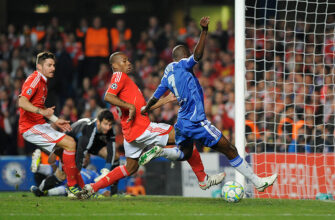After years of fervent debate, delicate negotiations, and a dash of political theater, the Milan City Council has cast its definitive vote: the iconic San Siro stadium is officially approved for sale to its long-term tenants, Inter and AC Milan. This landmark decision, reached in the quiet hours of a Tuesday morning, marks not just the end of an architectural marvel`s municipal ownership, but the dawn of a new, ambitious era for two of football`s most storied clubs and the city itself.
A Decades-Long Standoff Concludes
For more than a decade, the future of the Stadio Giuseppe Meazza, affectionately known worldwide as San Siro, has been a central topic of discussion in Italy. Unlike many modern European arenas, San Siro remained a municipal asset, with Inter and AC Milan paying annual fees to use a facility that, while steeped in history and an atmosphere that housed some of the most exciting matches, struggled to meet the revenue generation demands of contemporary football. This arrangement, a relic of a bygone era, often led to clashes over renovation costs, upkeep, and the clubs` persistent desire for greater autonomy and modernized infrastructure.
The final approval, delivered by a 24-20 vote after an exhaustive 11-hour public debate, was more than just a procedural formality; it was a testament to persistent negotiation and, perhaps, a timely ultimatum. With a sale price set at €197 million ($231 million), the council greenlit a path that promises not only financial injection but also a significant urban renewal project.
The Stakes: Leverage, Legacy, and Looming Deadlines
The urgency behind this resolution was palpable. Both Inter and AC Milan, now under the stewardship of American investment funds, had made their intentions abundantly clear. Club presidents, notably Nerazzurri’s Giuseppe Marotta, publicly stated that a negative vote would force them to explore options outside Milan. Such a move would have been a seismic event, depriving the city of significant economic activity, cultural identity, and, arguably, two of its most potent global brands. Mayor Giuseppe Sala, understanding the gravity of the situation, ultimately aligned with the clubs` vision, demonstrating a pragmatism that prioritized the city`s future sporting and economic landscape. One might say the clubs’ “threat” to pack their bags served its purpose, illustrating the delicate balance between civic pride and economic reality.
The clock was also ticking on a less dramatic but equally critical deadline: by November, the entire San Siro area would come under heritage protection, significantly complicating any future development or demolition plans. This impending designation added an undeniable urgency to the council`s deliberations, making Monday`s vote a true `now or never` moment for the clubs` ambitious aspirations for a new home.
From Iconic Grandeur to Modern Ambition
The plan is audacious: the existing San Siro structure, a colossus that has witnessed countless triumphs and tragedies, will eventually be demolished. In its place, on over 28 hectares (70 acres) of public land now under the clubs` direct control, will rise a new, state-of-the-art stadium. The decision to remain within the same historical precinct, after earlier proposals for separate venues outside Milan, signifies a renewed collaborative spirit between the two rival clubs, united by a common goal of progress.
Leading architectural firms Foster and Partners, alongside MANICA, have been commissioned to design the new facility. This choice hints at a structure that will blend innovative design with cutting-edge functionality, aiming to provide a world-class experience for fans and generate substantial new revenue streams for the clubs. This fundamental shift from renting to owning, from an aging icon to a cutting-edge arena, represents a strategic move to optimize matchday revenue, commercial opportunities, and overall brand value, bringing Milanese football in line with top European clubs.
A Graceful Exit: The Transitional Timeline
While the bulldozers may be metaphorically revving, San Siro still has a few grand acts left. It is scheduled to host the opening ceremony of the 2026 Milano Cortina Winter Olympic Games in February of next year. Following this international spectacle, the venerable stadium is not expected to see demolition before 2031. This extended farewell allows both Inter and AC Milan to continue playing in their historic home until the new facility is ready, ensuring a seamless transition for their legions of fans and maintaining the continuity of the Serie A experience.
The new stadium`s completion is targeted before 2032, a strategic deadline given Milan`s candidacy to host matches for Euro 2032, which is likely to be a joint bid with Italy and Turkiye. This thoughtful phasing ensures that Milan maintains its stature on the international sporting stage throughout the transition, embodying a blend of reverence for the past and resolute optimism for the future.
Beyond the Bricks and Mortar
This saga`s resolution is more than just about concrete and steel; it`s a profound statement about the ambition of Milanese football and the city`s commitment to remaining at the forefront of global sport. For decades, Italian football has grappled with aging infrastructure, often lagging behind its European counterparts in stadium ownership and modernization. The San Siro decision could serve as a powerful precedent, encouraging other Italian clubs to pursue similar visions for growth and self-reliance.
As the final whistle eventually blows on the San Siro, the echoes of its glorious past will undoubtedly linger in the hearts of fans. But the construction cranes rising in its vicinity will signal something equally powerful: the relentless march of progress, ensuring that the heart of Milanese football beats stronger, and perhaps a little more profitably, than ever before. It`s a pragmatic farewell to an old friend, traded for the promise of a gleaming future.








